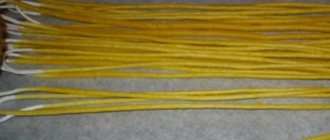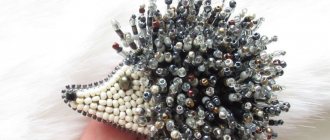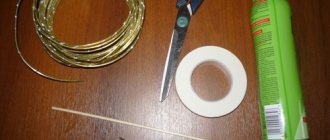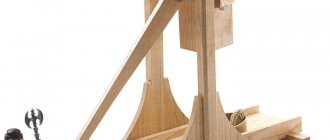Description of design
Hoes are an indispensable tool for creating irrigation furrows before watering with your own hands, rather than with automatic watering. An indispensable tool for hilling plants, since with the help of a long handle you can loosen the most remote areas. A summer resident's kit always consists of several types of gardening tools, for example, a hoe and its hybrid (hoe, ripper), both factory-made and assembled with your own hands.
Garden hoes are made in different variations, which allows you to easily do a wide variety of work on a good site. Depending on the required work, choose a hoe with different blade widths, with pointed or rounded corners, trapezoidal or triangle shaped.
The material from which a hoe is often made is carbon steel. This material is easy to sharpen with your own hands, but it is most susceptible to corrosion. To ensure that such a tool serves you as long as possible, after each work in the garden, thoroughly clean any remaining soil and grass from the blade, and then lubricate it with oil. Stainless steel hoes are more popular among summer residents, since stainless steel is more durable and requires simple maintenance. The only negative is the price.
A hoe is the same as a chopper, only its blade is made in the form of a hemisphere with a pointed end. This type is more suitable for hilling, creating holes for planting, as well as beds for potatoes, vegetables, and legumes on rocky soils.
The difference between the hoe-ripper hybrid and the classic type is the presence of non-curved ends, with which you can easily weed out weeds from creeping plants.
Types of hoes
The working blade of a classic universal hoe is made in the shape of a trapezoid, the wide edge of which is the cutting edge.
To make soil cultivation easier, you can use several more types of tools:
- hoe - a semicircular cutting edge (in the form of a halberd);
- drop-shaped, wedge-shaped working blades, well suited for harrowing or processing dense soils;
- Dutch - with a hole in the canvas;
- weeder - in the form of a pitchfork. The roots of the weeds are not cut, they turn outward.
To break up clods of earth, it is convenient to use a “dragon” type hoe, which instead of a blade has a powerful trident surrounded by a pointed bracket.
For loosening and weeding, some summer residents use electric hoes (rotary). They are convenient for weeding soft soil, picking moss from the lawn, and mixing fertilizers.
Technical features
If we talk about the technical characteristics of a country tool, then, in fact, a hoe is a small metal shield, which is attached at an angle of 90 degrees to a long wooden handle. The shield is made in the following shapes:
When purchasing, choose the type that is most suitable for the work ahead. Pay attention to the material used to make the metal blade, as this is what determines the quality of the purchased tool. Often, farms need hoees and shovels of different lengths and shapes for hilling, forming beds and removing weeds.
How to do it yourself
Today you can easily buy the necessary garden tools at any specialized store. But if you are a “homely” summer resident and like to do everything with your own hands, then why not make a hoe yourself.
So, let's look at how to assemble garden tools from scrap materials with your own hands. For the handle, you can use any long stick from the available tools, and for the blade, you can sharpen any hardened metal from what you have in the shed and is no longer quite working.
Video “How to sharpen a hoe”
Stage 1. Preparation of material. Break off a piece of metal of the required length from an old saw. The most convenient length is considered to be 25cm, but you can make the piece wider or a little smaller, thereby adjusting the tool to suit you. Next, using a grinder and the thinnest grinding disc, the blade is sawed at an angle of 45 degrees relative to the saw teeth so that this part is shorter. This simple technique will reduce the weight of the tool without reducing its working area.
Stage 2. Mounting holes. At a distance of 2 cm on the side of the saw teeth, drill 3-4 holes, leaving uniform distances of 3-4 cm between them. We drill the same holes in the metal corner. As a result, the holes on both parts should match.
Stage 3. Attaching the holder. At this stage you will need two parts with holes and a metal pipe 25cm and 30mm in diameter. We hammer one part 4-5cm inside and make two holes to tighten the corner. Afterwards, all that remains is to connect all the parts, and in the end you will get a hybrid of a hoe with teeth, fixed on an angle, which is connected to a metal pipe.
Stage 4. Wooden handle. The holder can be made of any material, like a shovel, with which it will be convenient for you to work: pine, maple, larch. The diameter of the handle is at least 3.5 cm. We grind one edge of the holder and hammer it into the pipe. To prevent the wooden holder from falling out, you can fix it with a bolt, after drilling a hole, or hammer a nail.
Miracle hoe for easy weeding
Neumann's Miracle Hoe is a relatively recent invention. The working part is made in the form of two springy metal rods, between which a string is stretched (performs the function of a cutting edge). It is fixed in the locking grooves.
Video about what Neumann's Miracle Hoe is and how to work.
The tool is convenient because it allows you to vary the width of the working part. To do this, the string is removed from the grooves, the spring rods are brought together or opened to the required distance, and a new string of suitable size is inserted into the locking grooves. This tool is not suitable for dense soil. The string will have to be changed frequently, the quality of the soil treatment will be worse.
Video “Chopping with an ax and shovel”
To understand how to make a simple hoe yourself, we recommend watching the following video. Garden tools have many practical applications.
Any professional gardener or just an amateur will tell you that you cannot start a single gardening season without a hoe. This universal tool helps us plow the garden, get rid of weeds and care for our crops.
What is the difference between a hoe and a hoe and a flat cutter?
Gardeners usually call a hoe a small hoe with a short handle, which can be used to process beds with dense plantings or young plants. The hoe is designed for large areas and crops that do not require delicate handling of the roots.
A special type of garden tool is a flat cutter. The most popular is the Fokine model. It differs from a hoe and a hoe in the shape of the working part - it is made in the form of a poker or hook with sharpened edges. The task of the flat cutter is to cut off the above-ground part of the weeds, leaving the roots in the ground to rot.
Homemade hoe from an old saw
Nevertheless, there are times when an old hoe breaks and a new one has not yet been purchased, and the gardener has to make a tool from scrap materials. For a homemade hoe, a hacksaw blade is best suited, since this metal will withstand any load and will not wear out for a long time. However, such a tool made from scrap materials will only serve you for one season. Next time you will need to take care of a new hoe.
To make a hoe with your own hands, you should follow these steps:
- first you need to saw off the canvas to the size you need; The best size is 25 cm;
- we take an unnecessary old wood saw and finally break it down; anyway, it will no longer be useful to us for its original purpose;
- using a grinder, we will make a cut at an angle of 45 degrees, towards the teeth of the file;
- Next, you need to drill 3 holes for fastening, and the holes should be at the same distance;
- using a drilling machine, you need to make the same number of holes in the metal corner with shelves;
- the next step is to secure the holder - for this we take a thick-walled metal pipe with a diameter of 25–30 mm and a length of 25–30 cm;
- We hammer one side of the pipe with a hammer 5 cm;
- In order for the corner to stand firmly, it is necessary to drill a couple of holes;
- as a result of all the work done, we get a finished blade with teeth, and now all that remains is to fasten the handle in order to use the homemade tool for its intended purpose; You can choose any tree for the cutting, the main thing is that you feel comfortable working in the garden with this material;
- Using sandpaper or a sharp knife, we cut one edge of the cutting and insert it into the pipe;
- To ensure that the hoe handle is firmly secured, we hammer a nail into metal and wood;
- then we will work with the old saw - we need to get rid of the teeth that are not needed in the hoe; To do this, we take a grinder and level the surface of the hoe, while the teeth can be left; some gardeners claim that with them the hoe loosens wet soil better.
A hoe for cabbage or for weeding can be made, for example, from a trimmer, a scythe or cardboard. This weeder will be no worse than the purchased version.
How to use a trimmer for weeding potatoes?
Not all gardeners choose this device, believing that it is better to pull out weeds with their hands, but there are also those who claim that it is very convenient. The device for weeding potatoes with a trimmer allows the use of several different attachments, which can be included in the kit or can be purchased separately. A good option is to make the nozzle yourself from available materials.
Lawn mower attachment for weeding potatoes
To remove weeds between rows, in most cases a trimmer head with a line is used. Experienced gardeners recommend choosing a fishing line with a round cross-section, so that weeds will not grow back so quickly. When describing attachments for weeding potatoes on a gasoline trimmer or on a device powered by electricity, it is worth mentioning another option - a three-blade knife, but it should be taken into account that if the unit hits stones, it will break. There are also specialized attachments with four cutters.
Homemade attachment for weeding potatoes on a trimmer
There are several options for making attachments, for example, you can make a “three-layer” blade. Homemade devices for weeding potatoes involve the use of a piece of tin 5 mm thick. Three circles of different diameters should be drawn on it: 320, 220 and 110 mm. Use a cutter to cut out circles and make holes in the center of each to insert the operating shaft. Using welding and reinforcement, connect the discs at a distance of 1-2 cm from each other. All that remains is to weld the nails to the disks and you can use them. Other interesting options for attachments are also possible.
Hoe from an old shovel
A hoe can be made from an ordinary shovel, which is definitely available on every site. The following steps should be followed:
- Using a grinder, we cut out a third of the shovel from the sharp side;
- take a thick-walled pipe with a diameter of 2.5 cm and a thickness of 2 mm; Make one edge of the pipe flat, measure 5 cm from it and bend the pipe at a right angle;
- in the flat part of the pipe and in the blade we drill two holes, retreating 2 cm from the cut;
- you can connect the pipe and the blade using a regular screwdriver, which every owner has;
- All that remains is to attach the wooden handle, and the hoe is ready.
Homemade hoe from an ordinary piece of metal
In general, any piece of durable metal is suitable for a hoe. It is not always possible to store an old shovel or saw on a gardener’s plot, so simple metal, which can certainly be found in the country, is also suitable for a hoe. Of course, a metal sheet with a thickness of 2 mm is ideal. The manufacturing process includes the following steps:
- it is necessary to cut a rectangular shape of the required size from the sheet, and the edges of the workpiece should be filed so as not to get hurt on them;
- Next, you should weld a thick-walled metal pipe to the sheet;
- then you need to insert a wooden handle into this pipe, securing it with a screwdriver;
- Finally, a hand-made tool can be painted black, the end of the hoe sharpened and varnished.
A skilled owner will spend no more than 4–5 hours on all the work. But such a tool can be made for free. But a homemade hoe will serve you well for one season, and then you need to think about purchasing a high-quality tool or all the necessary materials to once again make the hoe yourself. Many professional gardeners can make a hoe in 20 minutes. They spend a minimum of money on all the necessary materials (metal sheets, pipes and cuttings) and receive a finished instrument in less than half an hour. Such a hoe copes with its duties no worse. It works well with dry and moist soil, removes weeds and gently saturates the roots with oxygen without damaging them.
Important! If you nevertheless decide to make a hoe with your own hands from scrap materials, then you should not make it too heavy, because such a tool will be difficult to work with. And also such a hoe will not properly loosen the ground, much less remove all the weeds with their roots.
A hoe should be kept in every shed, because such a simple but irreplaceable tool helps every gardener grow a good harvest. The hoe does not take up much space on the site. It does not require special storage. In addition, this tool is quite easy to operate and is not heavy, so your back will not experience additional stress. Moreover, even beginners who have just decided to take up gardening can handle a hoe.
To learn how to make a hoe with your own hands, watch the video below.
Weeding trimmer attachments
For work, it is recommended to use a factory-made cultivator attachment. This is both easier and cheaper than making the device yourself. When selecting, it is recommended that you first take your trimmer and measure:
- rod diameter;
- number of splines on the shaft.
This information will allow you to choose the right nozzle. Typically, the description of the nozzles indicates the outer diameter of the rod - 26 or 28 mm and the number of splines on the shaft - 7, 9, or the cross-sectional shape of the end - square. To accurately select the right size, you should also measure the diameter of the shaft itself - they also differ in size, there are shafts with a diameter of 7, 8 and 9 mm.
If you are using a branded tool from well-known world brands, and not Chinese consumer goods, then it is better to order a branded attachment. This will extend the life of both the attachment and the brush cutter. In Moscow, for example, it is worth visiting branded stores, where professionals will select the nozzle; here you can also consult on the procedure for servicing the units.
To work on small areas, a regular disc cutter will be sufficient, but for large areas it is better to use reciprocating and drum cutters.
It is recommended to sharpen the cutters before each use.
When selecting a working tool, you need to focus on the dimensions recommended by the manufacturers. The hand will not be able to hold the blades that are too large, and the blades that are too small will not cope with the task. If you can select several sets of cutters for a cultivator, then you should consider purchasing cutters of different diameters - this will allow you to choose a tool for each specific type of task.
Step by step: making a hoe from an old saw blade
Experienced gardeners recommend using a hacksaw blade as a material for making professional garden tools. This metal has a lot of advantages, primarily increased strength, elasticity, and abrasion resistance. One sharpening will be enough for almost the entire season, even with “active actions” in the garden. Let's take a closer look at how to make this wonderful tool in a few minutes.
We take an unnecessary old wood saw and break it down. The blade must be of optimal length to make working not only convenient, but also productive. It is generally accepted that the most suitable length is 25 centimeters, but it can be made a little wider or narrower - it depends on the physical fitness of the owner of this treasure. We take a grinder, the thinnest grinding disc and make a cut at an angle of 45 0 to the teeth of the file so that this side is shorter. This is done in order to reduce the weight of the metal without reducing the working area.
Step back 2 centimeters from the side of the teeth, take a drill, drill 3-4 holes at a distance of 3-4 centimeters so that they are evenly spaced along the entire length. Similar holes need to be made in a metal corner with shelves 20x20 cm so that they fit the ones you made near the cloves.
We make a powerful hoe from an old shovel
Every farmer has an old bayonet shovel on his farm, the blade of which is usually broken in half. This is the most vulnerable place when digging up hard ground or harvesting potatoes - it rarely goes more than 1-2 seasons. There is no point in throwing away this scrap metal, because it can be used to make an excellent hoe for removing any kind of weeds in the garden. How to make a hoe with your own hands? Let's look at it in detail.
Take a grinder and a thin grinding wheel, cut off 1/3 of the shovel blade from the sharp end. It is advisable to cut evenly so that the top does not have to be leveled later. To avoid injury from the cut, you need to sand the edges.
We will need a pipe with a diameter of 25-30 mm, thick-walled (metal 2-3 mm thick preferably), leave one edge as is, hammer the other edge, make it flat. We retreat 5 cm from this edge and bend it at a right angle.
We drill 2 holes in the flattened edge of the pipe and exactly the same ones on top of our blade (we retreat 2-3 centimeters from the cut). We use rivets or just bolts; you can tighten the self-tapping screw with a regular country screwdriver.
It’s very simple, we select a piece with a slightly larger diameter than the pipe hole, sharpen one edge, and stuff it. To prevent the handle from slipping out during work, it must be secured. This can be done with a nail (drill a small hole in the metal) or a bolt. To install a clamp (instead of bolts), you need to cut the pipe lengthwise by 4-5 centimeters, then hammer in the handle and tighten the 2 halves of the pipe with a rigid steel clamp.
A hand-made hoe will have a considerable weight and will be very strong, reliable, and durable. It is suitable not only for removing large weeds in the garden bed, but also for deep loosening of row spacing by 7-12 centimeters. Due to its specific shape, it buries much deeper into the ground than a regular straight blade.










